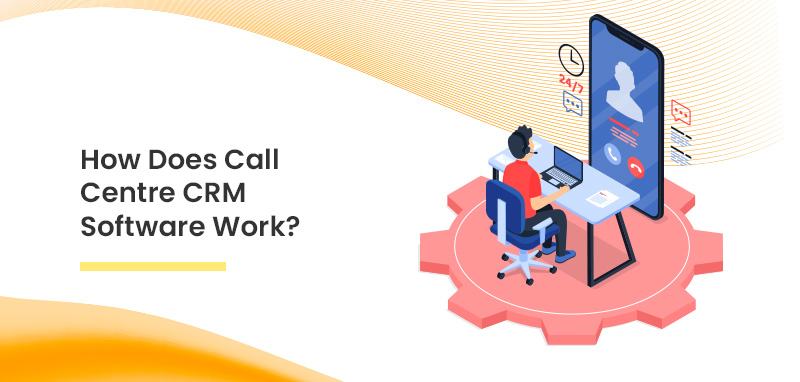How Does Call Center CRM Software Work?
Call center CRM software, or customer relationship management software, is a vital tool for businesses that rely on call centers to interact with their customers. It centralizes customer information, streamlines workflows, and provides valuable insights into customer behavior. This blog post will delve into how call center CRM software works and the benefits it offers.

Understanding Call Center CRM Software
Call center CRM software is a comprehensive platform designed to manage customer interactions and relationships. It combines various functionalities, including:
Customer Information Management: Stores and organizes customer data, such as contact details, purchase history, and preferences.
Call Routing: Automatically routes incoming calls to the most appropriate agent based on various factors like skill set, availability, and customer preferences.
Call Recording and Monitoring: Records calls for quality assurance, training purposes, and dispute resolution.
Knowledge Base: Provides agents with access to a centralized repository of information, such as product manuals, FAQs, and troubleshooting guides.
Reporting and Analytics: Generates reports on key performance indicators (KPIs), agent productivity, customer satisfaction, and other metrics.
How Call Center CRM Software Works
Data Collection: Customer information is collected from various sources, including the company's website, contact forms, and previous interactions. This data is then stored in the CRM system.
Call Routing: When a customer calls the call center, the system automatically routes the call to the most appropriate agent based on factors like the customer's location, language, or the nature of the inquiry. This ensures that customers are connected with agents who can best assist them.
Agent Interface: Agents use the CRM software to access customer information, view call history, and access relevant knowledge base articles. The software provides a user-friendly interface that helps agents navigate and manage customer interactions efficiently.
Call Recording and Monitoring: Calls are recorded and stored in the CRM system for quality assurance purposes. Supervisors can listen to calls to identify training opportunities, address performance issues, and provide feedback to agents.
Reporting and Analytics: Call center CRM software generates detailed reports on various metrics, such as average handling time, first-call resolution rates, customer satisfaction scores, and agent productivity. These reports help managers identify trends, measure performance, and make data-driven decisions.
Benefits of Using Call Center CRM Software
Improved Customer Satisfaction: By providing agents with the necessary tools and information, call center CRM software can help improve customer satisfaction. Agents can access customer history, resolve issues efficiently, and provide personalized service.
Increased Efficiency: Call center CRM software streamlines workflows and reduces manual tasks, leading to increased efficiency and productivity.
Enhanced Agent Productivity: By providing agents with a centralized view of customer information and relevant resources, CRM software can empower them to handle calls more effectively and efficiently.
Data-Driven Decision Making: The reporting and analytics features of CRM software provide valuable insights into call center performance. This data can be used to identify areas for improvement, optimize processes, and make data-driven decisions.
Improved Compliance: Call center CRM software can help businesses comply with industry regulations, such as recording calls and storing customer data securely.
Conclusion
Call center CRM software is an essential tool for businesses that rely on call centers to interact with their customers. By centralizing customer information, streamlining workflows, and providing valuable insights, CRM software can help improve customer satisfaction, increase efficiency, and drive business growth. As technology continues to evolve, call center CRM software will likely become even more sophisticated and integrated with other business systems.
